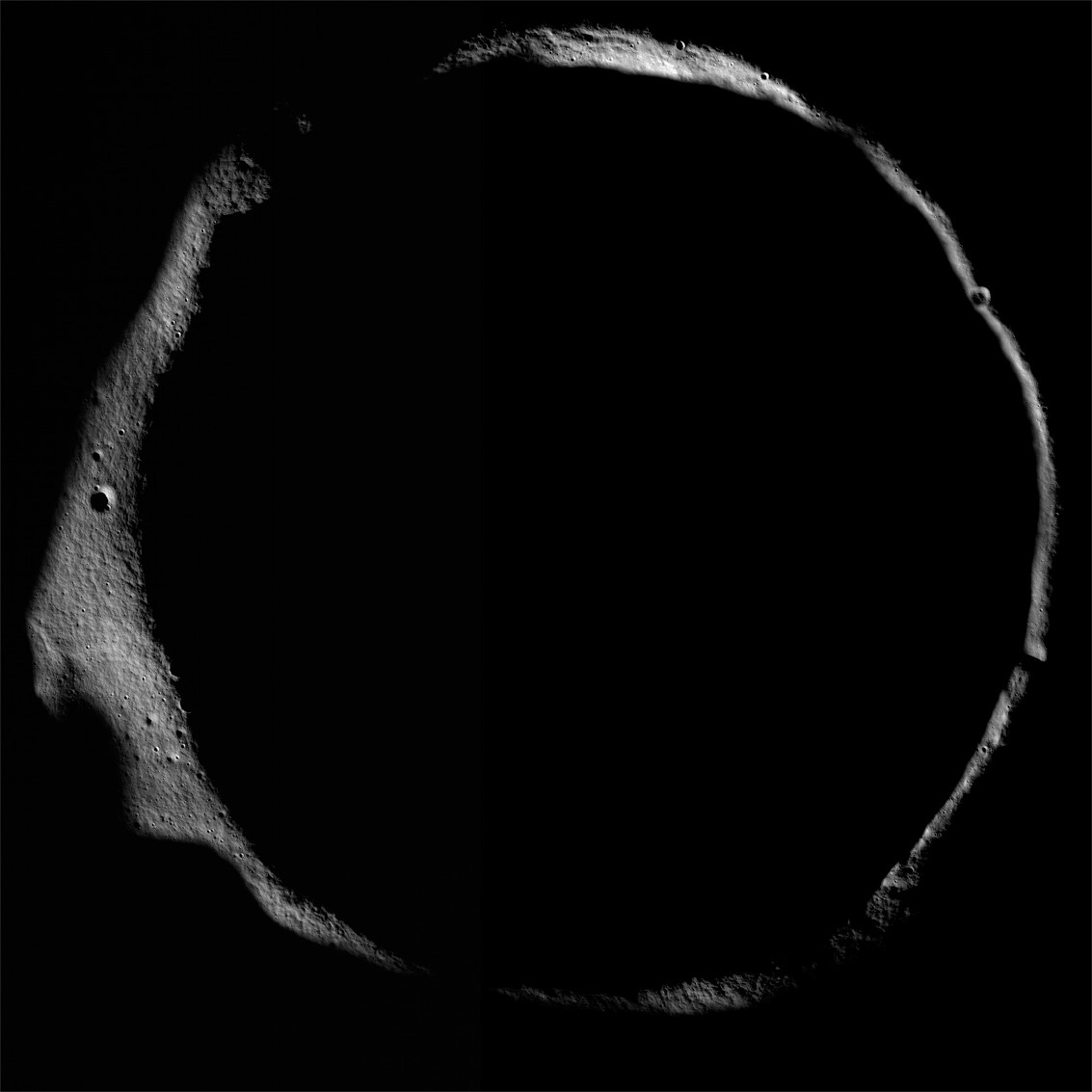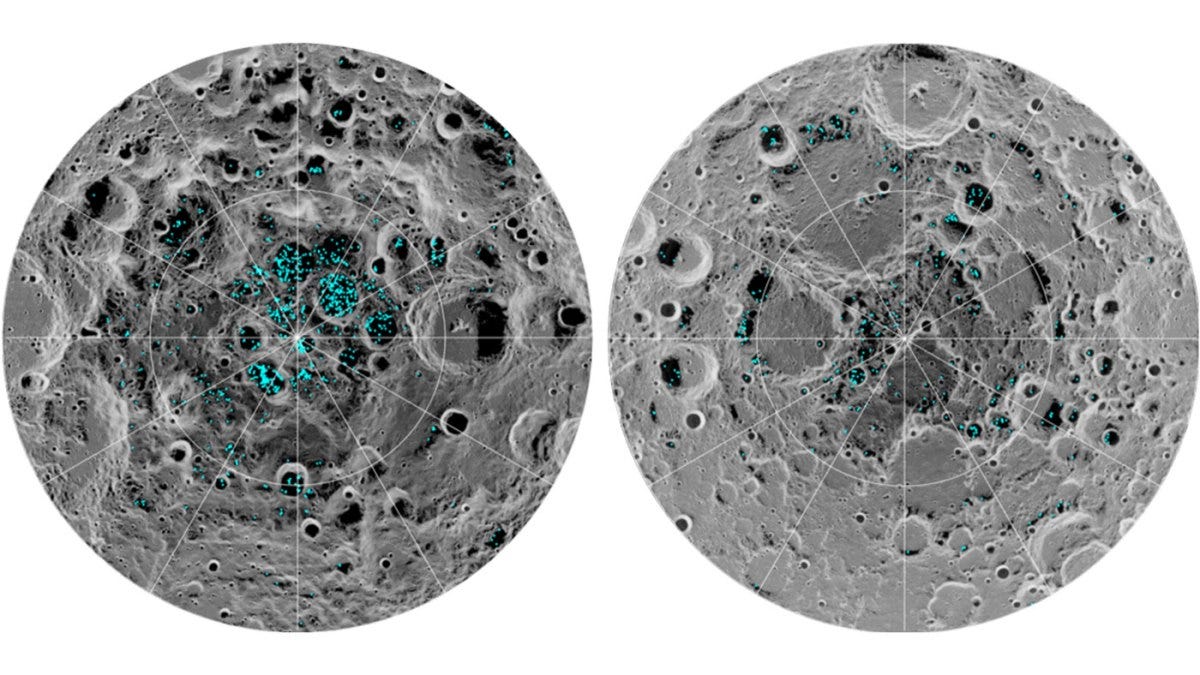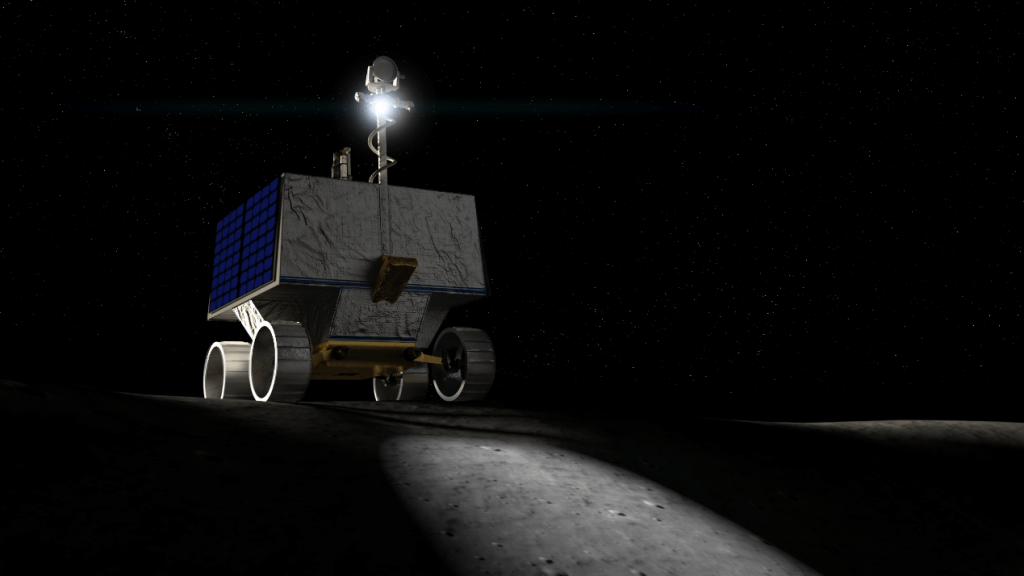Ultimate guide to water on the Moon
Water ice on the lunar poles is central to exploration plans of space agencies worldwide.
Scientists have long suspected water might exist on the Moon, but exactly how much there was and where it was located has been the source of much debate. In a 1967 paper, scientist Harold Urey mocked his colleagues for believing the Moon’s river-like channels were caused by anything other than water, such as “lava, dust-gas or possibly even vodka.”
The definitive discovery of Moon water came in 2008, when India’s space agency ISRO launched the Chandrayaan 1 spacecraft to lunar orbit. Chandrayaan 1 carried with it a NASA-provided science instrument called the Moon Mineralogical Mapper—M3 for short—that observed how the surface absorbed infrared light. Using this data M3 determined that previously suspected water molecules were ice inside the Moon’s polar craters.
A year later in 2009, NASA launched the Lunar Reconnaissance Orbiter (LRO) and an impact probe called LCROSS. The upper stage from the rocket used to launch LRO and LCROSS was deliberately smashed into a dark crater on the Moon’s south pole. LCROSS flew through the debris plume and detected 155 kilograms of water before it too crashed into the Moon.
Since then, many other Moon missions have seen hints of water in different forms and in different regions. Though these discoveries are vital incremental steps in the scientific process, they are occasionally over-hyped by the media.
In 2020, NASA and the German space agency’s flying SOFIA telescope observed the Moon in infrared and confirmed the presence of water in non-polar regions.
How can water exist on the Moon?
The existence of lunar water may seem strange, considering the Moon has no atmosphere and its surface is exposed to the vacuum of space. Daytime temperatures reach 120 degrees Celsius. Any surface water in sunlit regions evaporates and then floats away.
Earth is tilted 23 degrees away from the plane in which planets go around the Sun. This tilt changes the amount of sunlight our planet’s northern and southern hemispheres receive each year, creating our seasons. It also plunges the north and south poles into periods of constant darkness and constant sunlight.
Our Moon, however, has less of a tilt. At the poles the Sun hovers close to the horizon. Large craters with terraced rims block sunlight from ever reaching inside. These areas are called permanently shadowed regions, or PSRs. PSRs are known to exist on other low-gravity, airless worlds too, like Mercury and Ceres.

Temperatures inside the Moon’s PSRs can drop to -250 degrees Celsius. That’s colder than Pluto! The Moon’s poles have hundreds of PSRs where spacecraft have detected substantial water ice. It’s easy to see why the water stays inside such natural cold traps but where did it come from in the first place?
Where did water inside the Moon’s permanently shadowed craters come from?
Water-bearing comets and asteroids have bombarded our inner solar system multiple times throughout history. Some of these small worlds smashed into the early Earth and Moon, depositing water. Some of the Moon’s water may also have come from Earth if our theory that the Moon was created when a large object smashed into Earth is indeed correct. While most of the Moon’s water evaporated into space, some of it found its way into PSRs, where it has been preserved for billions of years.
In the Moon’s non-polar regions, the solar wind—more specifically, protons emitted by the Sun—constantly bombards the surface. Some of these protons interact with oxygen molecules in the lunar soil to produce water. This water isn’t anything like what you could drink, though: it’s in such small amounts that the lunar soil is still hundreds of times drier than Earth’s deserts.
How much water is on the Moon?
Based on remote observations by radar instruments aboard Chandrayaan-1 and LRO, the lunar poles have over 600 billion kilograms of water ice. That’s enough to fill at least 240,000 Olympic-sized swimming pools. This is a low-end estimate because the amount of water detected is limited by the strength of spacecraft radar. New missions with radars that penetrate deeper will likely find more water ice.

In 2020, researchers using LRO data identified PSRs inside craters that were smaller than a kilometer. These micro cold traps increase the expected amount of water ice on the Moon by at least 10 to 20 percent.
Why do we care about water on the Moon?
The high volume of water ice on the Moon has attracted the attention of space agencies and private companies around the world. They envision mining the water ice to produce air, drinking water, and propellant, fueling the needs of lunar habitats and even entire lunar industries in the future.
For scientists, the water ice and other chemicals in the PSRs offer a pristine record of cometary and asteroid bombardment from the solar system’s early days. By studying the water, we can learn more about the origin of the Earth and Moon, and by extension how life arose on Earth. Realizing the high value of these PSRs, NASA has designated them as sensitive locations subject to strict contamination protections.
How can we explore the Moon’s water ice directly?
Exploring the PSRs firsthand is no small challenge. The first hurdle is developing an ability to land with precision. Whereas regions near the Moon’s equator have large expanses of flat terrain, the polar regions are often rocky and sloped.
The lunar poles also require spacecraft that can survive very cold temperatures. While PSRs are extremely cold, their sunlit crater rims don’t get very much direct sunlight, keeping them cooled to an average of about -50 degrees Celsius.
Another challenge is power and communication. A rover venturing into a PSR will lose its line-of-sight with Earth, disabling communications, while the lack of sunlight means it will have to pack powerful batteries or rely on nuclear power.
How will future missions study and use water on the Moon?
Space missions in the last decade have been acquiring more information about PSRs and volatiles in them so they can be explored with landers and rovers. Scientists using data from LRO and Japan’s Kayuga orbiter have identified favorable landing sites for future missions. LRO data has also been used to make an extensive atlas of PSRs, which includes high-resolution altitude and slope maps, and even imagery based on dim light bouncing off the upper walls of lunar craters.

ISRO’s Chandrayaan-2 orbiter, launched in 2019, is using its advanced radar to map the water ice at greater depths and quantify it. These efforts will be aided by NASA’s Lunar Trailblazer orbiter launching in 2023, as well as the agency’s ShadowCam instrument onboard South Korea’s first lunar orbiter launched in 2022. China’s Chang’e-6 mission may bring samples from the Moon’s south pole back to Earth. These samples would allow us to precisely date different chemicals within the ice, tracing their origin story to unlock fundamental mysteries about the solar system.
NASA’s VIPER rover and the ISRO-JAXA LUPEX rover missions, slated for launch mid-decade, would drive into PSRs to make high-resolution maps of the water ice and other chemicals, and drill the ice to unravel what is hidden in its pristine depths.

VIPER’s and LUPEX’s findings will set the stage for NASA’s Artemis program, which envisions an eventual long-term human presence on the lunar surface. As part of the identified science priorities for Artemis III, the first crewed Artemis landing, NASA intends to cryogenically sample and bring precious volatiles from PSRs to Earth for meticulous studies. The lunar poles are also central to human and robotic exploration plans of commercial companies and many other nations, including China, India, Japan, Europe, and Russia.
PSRs add to the long list of reasons to explore our Moon. Samples from PSRs and the lunar poles will be studied by laboratories worldwide to precisely date the age of volatiles and materials within, trace their origin, and unlock fundamental mysteries about the Solar System.
Resource list
- Explore PSRs in a Google-maps like interface with LROC Quickmap
- Atlas of PSRs by NASA LRO
- Slope, elevation, temperatures, solar illumination and communication maps of the lunar south pole by LPI
- The Moon’s south pole on NASA’s Scientific Visualization Studio
- Tools and data on lunar mining & landing sites
Originally published at The Planetary Society, enhanced since to keep information current.
